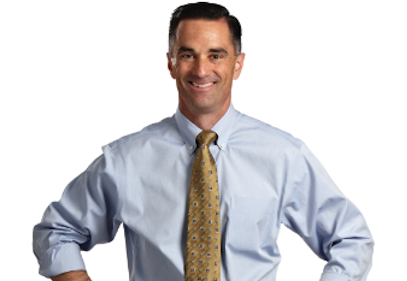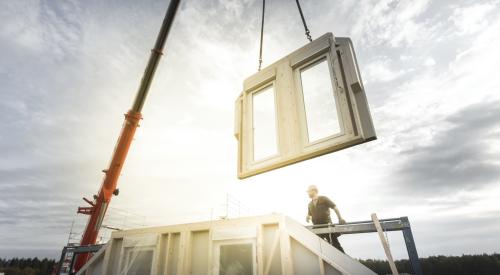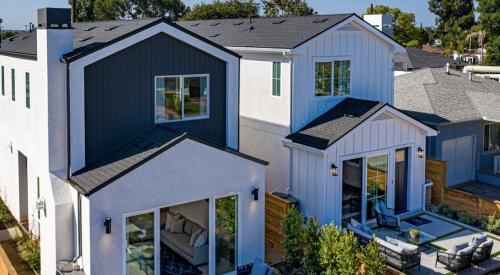Since taking the helm of the nation’s largest home-building company in July 2003 at the tender age of 38, Richard J. Dugas, Jr., has orchestrated one of the largest mergers in the history of home building (Pulte-Centex in 2009), expanded the builder’s reach into 60 markets throughout 28 states, and navigated the company through the worst housing market since the Great Depression. Through it all, PulteGroup remains the home-building industry’s top dog (see Pro Builder's 2011 Housing Giants rankings).
We recently sat down with Dugas to discuss his strategy for bringing Pulte back to profitability in 2011, his thoughts on GSE reform and the changing view on housing policy in Washington, D.C., and his long-term outlook for America’s largest home builder.
Pro Builder: When you look at the housing market in its weakened condition, where are the opportunities for Pulte to sell homes, both geographically and demographically?
Richard J. Dugas, Jr.: In general, it’s very clear today that the sell has to be value-oriented. When I say value-oriented, I mean at all price points, not just entry level. Consumers are extremely savvy today and they have a tremendous amount of choice, primarily from resale, and we’ve got to be competitive at all price points. That means ensuring that our products offer what they want, but are not more than they are willing to pay for.
We’ve been very diligent about re-engineering floor plans to ensure we’re not wasting things behind the walls that customers don’t appreciate, like truss layouts and duct layouts, in order to help us save money. In addition, we’ve looked at the specifications inside our homes and made sure that we’re not offering more standard than the buyer is willing to pay for, which just puts pressure on margins if we have to discount to sell.
Demographically, the active-adult and Gen-Y sectors are the fastest-growing segments. Our Del Webb brand is an area we’re going to enjoy strength from in the future.
RELATED
- Homebuyer Demographics: Are You Ready for This?
- What Do Homebuyers Want? Builders Adopt a New Strategy
- A Mentor Like No Other—What I Learned From Bill Pulte
Geographically, clearly the East Coast is healthier today than the West Coast. We are very happy with our Mid-Atlantic through the Northeast business. We’re also happy with our Carolinas and Georgia business, and we’re pleasantly surprised with the strength we’re seeing in Florida. I think a lot of that has to do with our positioning; I believe our assets are better than some others in Florida. We’re also seeing pretty good success in Texas, where the Centex merger really helped us.
PB: You led a recent restructuring of the Pulte organization to reduce overhead expenses. What were the key areas targeted and how has the company benefited from this move?
RJD: The market has been very difficult the last several years, so we took the opportunity starting last summer to flatten the organizational structure and eliminate the COO position. Subsequent to that, we streamlined a lot of our reporting areas and divisions, and then we took a fresh, from-the-ground-up look at the role of our home office. As a result of that, we identified about $100 million worth of cost savings that we will be enjoying in 2011.
PB: PulteGroup owns quite a bit of land. Can you talk about your mix of positions and where you are seeing opportunity?
RJD: We do have a lot of land. I think Pulte and Toll Brothers, on a yearly supply, probably have the most land. And frankly, it’s our opinion that the land market itself isn’t changing very much from historical patterns. If anything, it’s getting more difficult to entitle land. I think a lot of builders in the downturn have had to generate cash in order to continue to stay in business, and one of the ways to do that is to sell off large parcels. We were fortunate in the way our debt structure was set up with a lot of long-term debt to not have to liquidate a lot of land, so we held on to most of our better positions. Unfortunately, we’ve had to impair those. But we really like where that leaves us because, by and large, they are in the same markets we’ve been in. As the market takes hold, we’ll be advantaged versus those that are going to have to go back into the market and buy a lot of new land.
Having said that, we are buying some distressed parcels. We’re opening about 130 new communities this year. They tend to be developed lots, 50 to 100 lots in a position — not real large, but strategically located. We are very pleased with the kind of financial results we’re getting out of those. But I want to emphasize, this is not a strategy we can make a living on forever — it’s an opportunistic, transitional strategy while the market is difficult. You cannot run a large home-building company feasting on a few lots at a time, given historical land needs.
PB: Many builders today are using energy efficiency as a way to differentiate their new homes from the glut of existing homes on the market. Is energy efficiency a key part of your plan going forward?
RJD: I believe we have built more Energy Star homes than anyone, and it’s a key part of our platform. What we hope to do is similar to what you’ve seen from a few competitors — introduce a very simple way for the consumer to differentiate with some of the labeling we’ve seen, such as HERS, that would give a consumer an idea of how energy efficient their home is. We don’t have that rolled out nationwide just yet, but we’re in the process of putting it into a few markets.
PB: What is Pulte’s view on housing policy, particularly GSE reform and the mortgage-interest deduction?
RJD: We have been very close to the policy decisions that are being made in Washington. I believe we’re likely to see a balanced solution come out. I think Fannie and Freddie are undoubtedly going to get either privatized or partially privatized, but it’s going to take years; I think that’s a four- or five-year process. I acknowledge that the items being discussed are somewhat scary for housing, but I think, in the end, we’ll see a measured pull back of support that will be appropriate. In other words, adjusting the mortgage-interest deduction or reducing the support for Fannie and Freddie over a very slow period of time while the market is improving is a lot more responsible than just making a massive change today.
PB: In your latest earnings report, you stated that achieving profitability in the second half of 2011 is a key goal. What’s your roadmap for becoming profitable this year?
RJD: Number one, better sales results will lead to a bigger backlog, which will lead to more closings in the second half of the year, so we’ll have improving volume the second half of the year. Secondly, margins in backlog give us visibility to improving margins this year. If we improve margins with more volume, clearly that’s beneficial. Finally, the run rate of cost savings that we talked about earlier coming through the year are going to be helpful. The combination of these three is what gives us the confidence to talk about profitability in the second half of the year.
PB: When you look out into the future, do you see giant firms like Pulte grabbing more share of the market, or will housing always be primarily a local market?
RJD: This is a local business, it will always be a local business, and we should not underestimate the fact that when business is better, say two to three years from now, all the small guys are coming right back. They will be financed from different sources and they will have different names, but they’ll be back. There is no barrier to entry in this business, and everyone understands how exciting and lucrative housing can be.
Having said that, a few of the large builders will take share. You cannot take share without land, and it’s the companies that control a lot of land, like us, D.R. Horton, and Lennar, that will likely take share. I think we’ll be in the catbird seat because a lot of the land that we have is going to translate into same-store sales growth earlier than those builders who have to replace communities that are running off. In other words, the curse of our land position during the past three to four years is going to be the blessing for the future. I’ll make the prediction right now: There will be a lot shortage in this country when business improves. During that two- or three-year period, this company will take a significant amount of share.
PB: What’s your view on this particular recession? How unique are the times we live in today?
RJD: It has been one hell of a punch. I frequently talk with my CEO peers that are in other industries, and I tell them that we’ve had to lay off between 70 and 80 percent of our workforce. They look at me and say, “You mean 18 percent, don’t you?” I say, no, 80 percent. They can’t possibly imagine how we can still be in business. It’s really a testament to Bill [Pulte] and all the people who have come before me who set up this company so well and managed so conservatively with long-term debt. It’s been an incredible ride.













